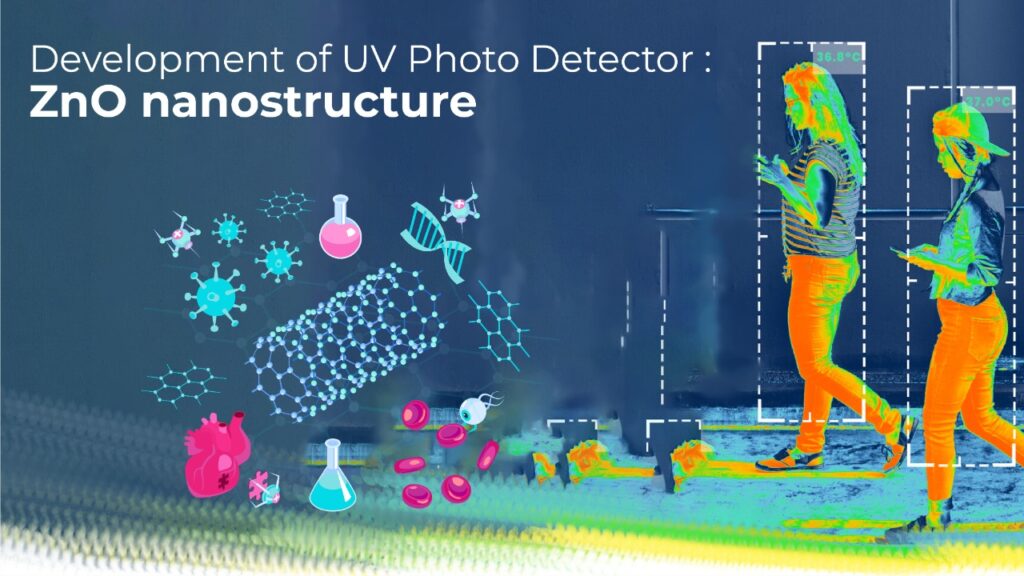Development of UV Photo Detector : ZnO nanostructure
Nanoscale materials have shown unprecedented capabilities in the emerging technologies ranging from solar energy harvesting to biosensing. New applications for nanophotonics and nanoelectronics are been inspired by the development of defect-free low-dimensional nanostructures.To assess their potential capabilities is particularly important to uncover their new and interesting properties and characteristics concerning electronic transport, light emission and photo-detection.
The low dimensionality and the high surface-to –volume ratio play a fundamental role in the overall photo-detection performance. An important attribute of photoconductors is their ability to produce gain in the excess of one that is the generation of more than one electron in an external circuit for each absorbed photons. The direct band-gap materials other than ZnO have a lower propensity to trap charge carriers, and nanostructures of these materials are, in general, capable of more rapid responses. Detection of ultraviolet (UV) light is a important factor in civil as well as military fields. It has boosted up the research on the progress of materials that are capable of sensing the UV light. During last few years, zinc oxide based nanostructures have been widly explored by the scientific community for a large variety of technological applications. ZnO being a wide band gap (~3.37eV at 300 K) n-type semiconductor has been found to be promising for the UV light sensing. The surface properties of ZnO due to wide band gap and the adsorbant-dependent make it suitable for UV photodetection. Moreover, it is intrinsically non-toxic and environmental-friendly.

Development of ZnO nanostructure further opens new dimension for the development of UV photodetector. In the case of nanostructures, surface related gas adsorption/desorption is more prominent. There are some reports in which the surface related adsorption/desorption processes in the case of ZnO films and aggregates of nanorods has been taken as large advantageous factor for high photoconductivity. In these reports two main factors contributing to the high photosensitivity of such nanostructures have been recognized:
i).The large surface-to-volume ratio and the presence of deep level surface trap states greatly prolongs the photocarrier lifetime;
ii).The reduced dimensionality of the active area shortens the carrier transit time. The combination of long lifetime and short transit time of charge carriers can result in substantial photoconductivity in ZnO nanostructures.
While there are several other reports in which surface related adsorption/desorption processes has been shown as the factor for slow photo response. The response time is an very significant property of photoconductive materials.
Three factors are important for any application of ZnO for UV detection:
(1) the sensitivity, expressed in Acm2W-1 or in AW-1,
(2) response time expressed in microseconds and
(3) the visible light rejection, the ratio of the current in the visible spectrum.
source: https://www.maharishiuniversity.ac.in/development-of-uv-photo-detector-zno-nanostructure/




Comments
Post a Comment